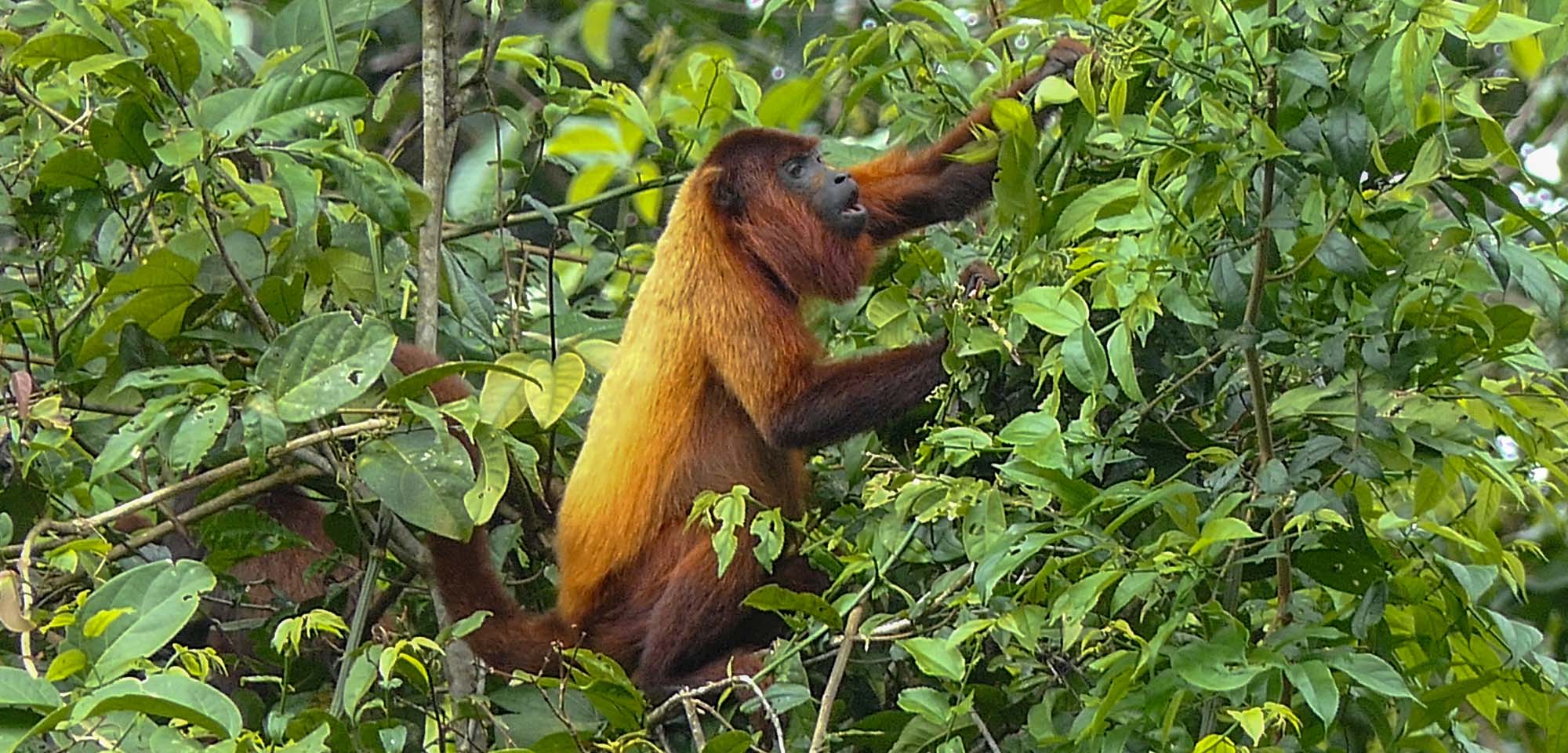Have you ever wondered about the unique creatures that call Suriname their home? Well, get ready for a wild adventure because we’re about to take you on a wildlife tour like no other! Suriname, located on the northeastern coast of South America, is a biodiversity hotspot with a magical array of species just waiting to be discovered. From vibrant frogs to elusive jaguars, you’ll be amazed by the incredible diversity of wildlife that exists in this tropical paradise.
Once you step foot in Suriname, you’ll feel like you’ve entered a whole new world. The dense rainforests and pristine rivers provide the perfect habitat for countless fascinating creatures. Get ready to explore the Surinamese rainforests, where you’ll encounter incredible wildlife such as the brilliantly colored poison dart frogs. These tiny amphibians come in a variety of striking hues and patterns, warning predators of their toxic nature. Even though they may be small, their vibrant appearance will capture your attention and leave you in awe.
But the wildlife adventure doesn’t stop there! Suriname is also home to majestic mammals like jaguars and giant anteaters. These creatures possess an air of mystery and are notoriously difficult to spot. However, with a little bit of luck, patience, and the guidance of an experienced local guide, you might just catch a glimpse of these incredible beings. Your heart will race as you witness firsthand the power and grace of a jaguar, or the comical sight of a giant anteater using its long snout to devour its prey.
So, are you ready to embark on this thrilling wildlife tour of Suriname? Get ready to marvel at the unique creatures that call this astonishing country their home. Keep reading to dive deeper into the world of Surinamese wildlife and prepare to be amazed!
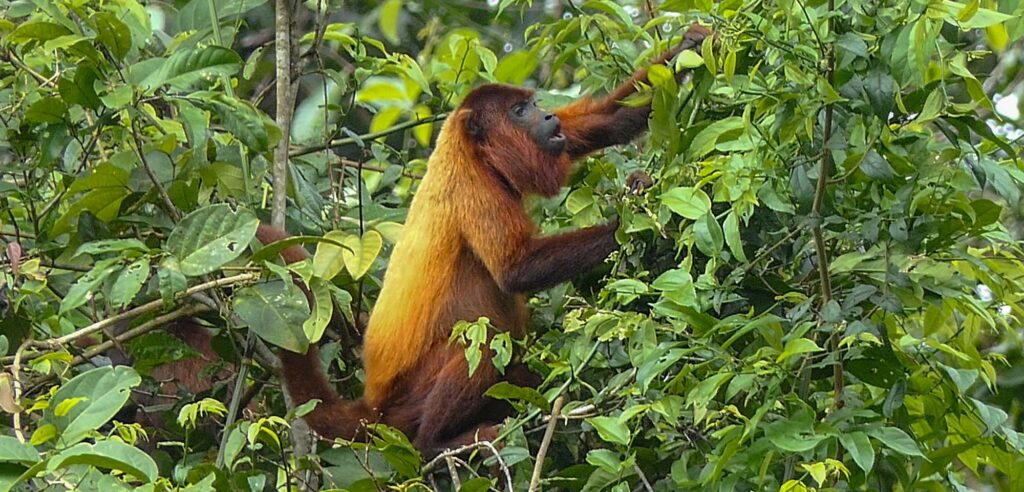
Introduction to Suriname
Suriname, located on the northeastern coast of South America, is a small country with an incredibly diverse wildlife population. Nestled between Guyana, Brazil, and French Guiana, Suriname is often referred to as the “green gem” due to its abundance of lush rainforests, winding rivers, and picturesque landscapes. This tropical paradise is not only known for its natural beauty but also for the incredible variety of species that call it home.
Geographical location
Suriname covers an area of approximately 163,820 square kilometers, making it the smallest country in South America. It has a unique geographical location, with the Atlantic Ocean to the north and dense rainforests dominating the interior. The country is blessed with numerous rivers, including the Suriname River, which serves as a lifeline for both humans and wildlife.
Cultural diversity
In addition to its rich natural resources, Suriname is a melting pot of ethnicities and cultures. The country’s population is a beautiful blend of indigenous peoples, African descendants, Chinese immigrants, and Javanese settlers, among others. This diversity is reflected in Suriname’s vibrant cultural traditions, music, cuisine, and religious practices.
Importance of Suriname’s Wildlife
Suriname’s wildlife plays a crucial role in maintaining the delicate balance of its ecosystems. The country is known for its biodiverse hotspots and ecologically significant areas, which provide a habitat for an array of species.
Biodiversity hotspots
Suriname is part of the Guiana Shield, a region renowned for its high levels of biodiversity. This area is home to nearly 34% of the world’s tropical rainforests and is considered one of the most intact ecosystems on the planet. Suriname’s pristine rainforests serve as crucial habitat for countless flora and fauna species, many of which are found nowhere else on earth.
Ecological significance
The wildlife of Suriname plays a vital role in maintaining the health and stability of its ecosystems. From pollination to seed dispersal, predators to prey, every species contributes to the intricate web of life. Suriname’s forests act as carbon sinks, helping to combat climate change by absorbing greenhouse gases and storing carbon. Protecting the country’s wildlife is not only crucial for conserving its unique species but also for the overall health of the planet.
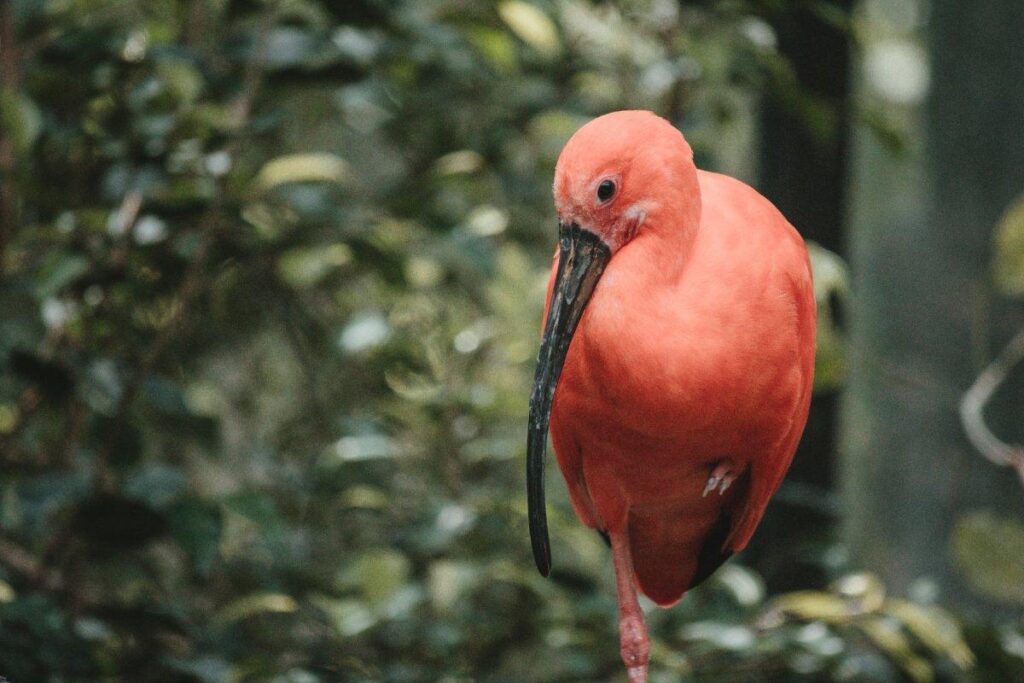
Mammals of Suriname
Suriname is home to a variety of captivating mammals, each with its own unique characteristics and adaptations.
Giant otter
The giant otter, also known as the “river wolf,” is a flagship species for Suriname. This charismatic creature is the largest otter species in the world and can reach lengths of up to 6 feet. With its sleek, streamlined body and webbed feet, the giant otter is a skilled swimmer and diver. Its playful nature and distinct vocalizations make it a delight to encounter in the wild.
Jaguar
The jaguar, often referred to as the king of the jungle, is the largest big cat species in the Americas. Known for its powerful build and striking coat pattern, the jaguar is an apex predator in Suriname’s rainforests. Spotting this elusive feline in its natural habitat is a once-in-a-lifetime experience, and tourists flock to Suriname in the hopes of catching a glimpse of this majestic creature.
Sloth
Suriname is home to several species of sloths, including the iconic three-toed sloth. These arboreal creatures spend the majority of their lives hanging upside down from trees, feasting on leaves and moving with deliberate slowness. With their endearingly lethargic movements and fluffy appearances, sloths have become a symbol of tranquility and relaxation in Suriname’s wild spaces.
Anteater
The anteater, with its long snout and sticky tongue, is another fascinating mammal found in Suriname. These insectivorous creatures use their strong forelimbs and sharp claws to tear open termite mounds and ant nests, extracting their preferred meal. Suriname’s abundance of termites and ants makes it an ideal habitat for these peculiar yet captivating animals.
Birds of Suriname
Suriname is a birdwatcher’s paradise, with over 700 bird species recorded within its borders. From vibrant toucans to powerful raptors, the skies and forests of Suriname are alive with a symphony of wings and song.
Toucans
One of Suriname’s most recognizable birds is the toucan, with its oversized bill and dazzling plumage. These fruit-eating birds are not only known for their vibrant colors but also for their distinctive calls that echo through the treetops. Spotting a toucan in Suriname’s rainforests is like stumbling upon a living work of art.
Harpy eagle
The harpy eagle, one of the largest and most powerful birds of prey, calls Suriname home. With its striking appearance and impressive wingspan, the harpy eagle is an apex predator, known for its hunting prowess. Observing this majestic bird in flight is an awe-inspiring sight that leaves visitors in admiration of Suriname’s natural wonders.
Scarlet ibis
Suriname’s coastal wetlands are a haven for the scarlet ibis, a stunning bird adorned in brilliant shades of red. These social birds nest in large colonies, creating breathtaking displays of color against the mangrove forests. Witnessing flocks of scarlet ibises taking flight at sunset is a visual spectacle that showcases the beauty of Suriname’s avian diversity.
Hummingbirds
Suriname is home to a multitude of hummingbird species, each more exquisite than the last. These tiny birds, known for their iridescent plumage and hovering flight, are a photographer’s dream. Suriname’s floral diversity provides an ample supply of nectar, attracting hummingbirds in vibrant displays of color and agility.
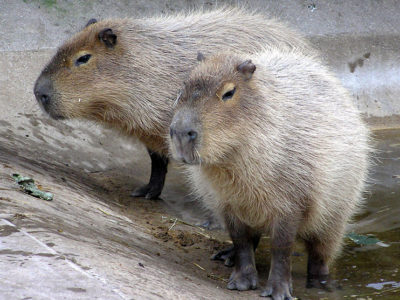
Reptiles and Amphibians of Suriname
Suriname’s tropical climate and abundance of waterways make it a haven for reptiles and amphibians. From the mighty anaconda to the vibrant poison dart frog, these unique creatures showcase the incredible diversity of Suriname’s wildlife.
Anaconda
The green anaconda, the largest snake species in the world, can be found lurking in Suriname’s rivers and swamps. These formidable hunters can reach lengths of up to 30 feet and weigh over 500 pounds. While spotting an anaconda in the wild is a rare occurrence, its presence in Suriname’s ecosystems is a reminder of the country’s untamed wilderness.
Caiman
The black caiman, Suriname’s largest predator, is a close relative of the alligator. With its armored body and powerful jaws, the caiman is an apex predator in Suriname’s waterways. These reptiles play a vital role in regulating their ecosystems, maintaining the balance between predator and prey.
Poison dart frog
The poison dart frog, known for its vibrant colors and toxic skin, is a gem of Suriname’s rainforests. These tiny yet deadly amphibians are not only a marvel to behold but also serve as an indicator of the health of their habitats. Suriname’s tropical forests provide the perfect backdrop for these elusive and enchanting creatures.
Sea turtle
Suriname’s coastline is a vital nesting ground for several species of sea turtles, including the critically endangered leatherback turtle. Huge efforts are made to protect these majestic creatures and their nesting sites, as their survival is intricately linked to the health of Suriname’s marine ecosystems. Witnessing the arduous journey of a sea turtle from egg to hatchling is a humbling experience and a reminder of the fragile balance of life.
Insects and Arachnids of Suriname
Suriname’s rainforests are teeming with a diverse range of insects and arachnids. From giant spiders to colorful butterflies, these small yet significant creatures make up the intricate tapestry of Suriname’s ecosystems.
Goliath birdeater spider
Suriname is home to the goliath birdeater spider, the largest spider in the world by mass. With its sheer size and intimidating appearance, the goliath birdeater has captured the fascination of arachnophiles and curious travelers alike. However, despite its intimidating name, these spiders pose no threat to humans and are primarily nocturnal hunters of smaller prey.
Morpho butterfly
The Morpho butterfly, with its shimmering blue wings, is a symbol of Suriname’s enchanting rainforests. These large butterflies are adored for their iridescent colors, which seem to change as they gracefully flutter through the forest understory. Encountering a morpho butterfly in flight is like witnessing a living, breathing work of art.
Leaf-cutter ants
Leaf-cutter ants are an integral part of Suriname’s ecosystems, shaping and influencing the landscape. These industrious insects gather leaves and transport them back to their nests, where they use them as a substrate for cultivating a fungus that serves as their primary food source. Suriname’s rainforests are crisscrossed with intricate trails created by these tiny yet powerful creatures.
Cicada
The sounds of cicadas fill the air in Suriname’s rainforests, creating a symphony that is music to the ears of nature enthusiasts. These small but vocal insects are known for their loud, buzzing calls. Hearing the chorus of cicadas during a rainforest hike is an experience that immerses visitors in the vibrant and diverse ecosystem of Suriname.
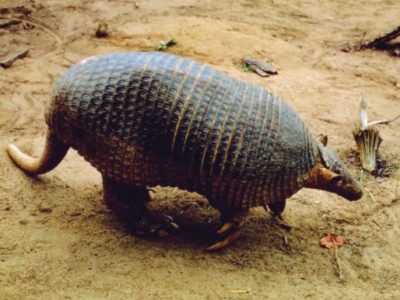
Aquatic Life of Suriname
Suriname’s rivers and coastal waters are home to a mesmerizing array of aquatic life. From playful dolphins to elusive manatees, these marine creatures add an extra layer of wonder to Suriname’s wildlife offerings.
Dolphins
The waters of Suriname are populated by several species of dolphins, including the incredibly intelligent and acrobatic bottlenose dolphins. Suriname’s coastal areas serve as important feeding grounds for these charismatic marine mammals, providing them with abundant fish stocks and the perfect habitat for socializing and raising their young.
Manatees
The manatee, often referred to as the sea cow, can be found swimming in the rivers and coastal waters of Suriname. These gentle giants are herbivorous and spend the majority of their time foraging on aquatic vegetation. Spotting a manatee gracefully gliding through the water is a sight that leaves a lasting impression on visitors to Suriname.
Piranhas
Piranhas, infamous for their sharp teeth and aggressive nature, are a common sight in Suriname’s rivers. Contrary to popular belief, piranhas are not mindless killers. They primarily feed on fish and play a crucial role in maintaining the balance of Suriname’s aquatic ecosystems. Anglers from all over the world flock to Suriname in pursuit of the adrenaline rush that comes from catching one of these fierce fish.
Freshwater stingray
Suriname’s rivers are also inhabited by freshwater stingrays, fascinating creatures with a venomous barb on their tails. These elusive rays are often found partially submerged on the riverbed, camouflaging themselves to avoid predators. Despite their fearsome appearance, freshwater stingrays are not aggressive and will only use their venomous barb in self-defense.
Endangered Species in Suriname
Suriname, like many other countries around the world, is facing the threat of species extinction. Several iconic species in Suriname are listed as endangered, highlighting the urgent need for conservation efforts.
Giant river otter
The giant river otter, despite being an emblematic species of Suriname, is critically endangered. Habitat loss, pollution, and hunting have contributed to the decline of this magnificent creature. Efforts are being made to protect the remaining populations and raise awareness about the importance of preserving their habitats.
Leatherback turtle
The leatherback turtle, the largest of all sea turtle species, is also critically endangered. Suriname’s beaches serve as important nesting grounds for these gentle giants, but their numbers have dwindled due to human activity and climate change. Suriname’s commitment to protecting these nesting sites and implementing conservation measures is crucial for the survival of this magnificent creature.
Harpy eagle
The harpy eagle, despite its impressive size and strength, faces the risk of extinction in Suriname. Habitat loss and illegal hunting pose significant threats to this majestic bird. Ensuring protected areas and strict enforcement of anti-poaching laws are vital for the conservation of the harpy eagle.
Black caiman
Suriname’s black caiman, a top predator in its ecosystems, is also classified as vulnerable. The widespread destruction of wetlands and illegal hunting have taken a toll on this iconic reptile. Protecting its habitats and implementing sustainable management practices are essential for the survival of the black caiman.
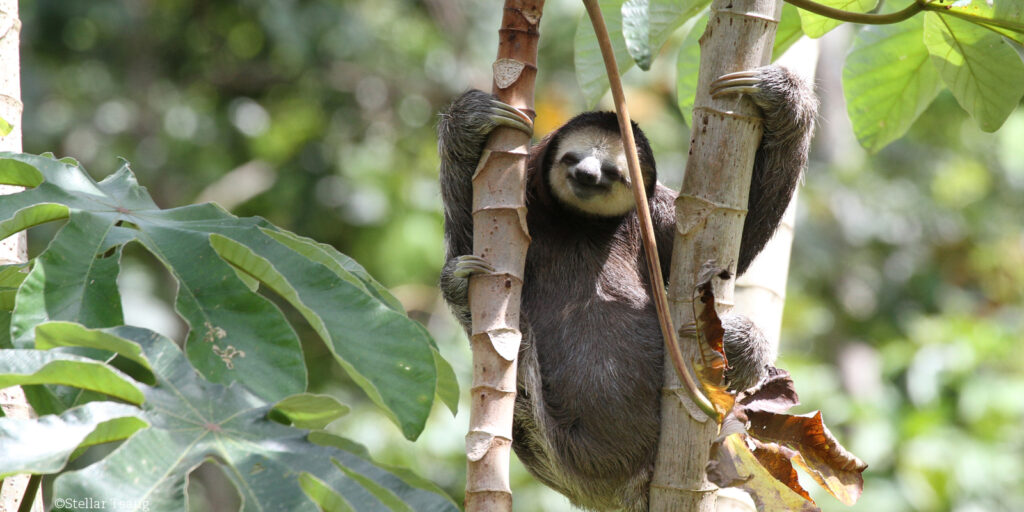
Protection and Conservation Efforts
Suriname recognizes the importance of protecting its unique wildlife and has dedicated efforts to safeguard its natural heritage.
National parks
Suriname boasts several national parks, including the breathtaking Central Suriname Nature Reserve and Brownsberg Nature Park. These protected areas serve as crucial habitats for a range of species, from jaguars to giant river otters. Managed by the government and local organizations, national parks are key to preserving Suriname’s natural treasures.
Wildlife sanctuaries
In addition to national parks, Suriname has established wildlife sanctuaries to protect vulnerable species and provide safe havens for their populations. The Wia Wia Nature Reserve, for example, is a sanctuary for the endangered West Indian manatee, safeguarding their breeding grounds and critical habitats.
Research initiatives
Suriname is actively involved in scientific research and studies focused on understanding and conserving its wildlife. From monitoring population trends to conducting genetic analysis, research initiatives provide valuable insights and inform conservation efforts. The collaboration between local and international scientists is crucial for an in-depth understanding of Suriname’s unique ecosystems.
Partnerships
Suriname actively collaborates with international organizations and conservation initiatives to promote the protection of its wildlife. Through partnerships, Suriname gains access to funding, expertise, and knowledge exchange, enabling the implementation of effective conservation strategies. These collaborations play a critical role in overcoming challenges and ensuring the long-term preservation of Suriname’s natural wonders.
Experiencing Suriname’s Wildlife
Suriname offers a range of opportunities for nature enthusiasts to immerse themselves in its remarkable wildlife.
Eco-tourism options
Suriname’s commitment to sustainable tourism has led to the development of eco-tourism options that allow visitors to experience its wildlife responsibly. From eco-lodges nestled in the heart of the rainforests to community-based tourism initiatives, there are plenty of options for those seeking an authentic wildlife encounter.
Guided wildlife tours
Experienced local guides offer wildlife tours that take visitors deep into Suriname’s jungles, rivers, and coastal areas. These guides have an intimate knowledge of the local flora and fauna, allowing them to spot elusive creatures and provide invaluable insights into Suriname’s ecosystems.
Nature reserves
Nature reserves, such as the Galibi Nature Reserve and the Coppename Monding Nature Reserve, provide visitors with the opportunity to witness Suriname’s wildlife up close. From sea turtle nesting sites to bird-watching hotspots, these reserves are a treasure trove of biodiversity.
Night safaris
Night safaris are a unique way to explore Suriname’s wildlife after the sun sets. Guided by experts, visitors can witness the nocturnal activities of animals such as jaguars, giant river otters, and caimans. The sounds and sights of the rainforest come alive during these immersive experiences, providing a deeper understanding of Suriname’s wildlife.
Challenges and Threats
Suriname’s rich wildlife faces numerous challenges and threats that put their survival at risk.
Habitat destruction
Deforestation and habitat loss are critical issues facing Suriname’s wildlife. The expansion of agriculture, illegal logging, and mining activities contribute to the destruction of crucial habitats. Addressing these challenges requires sustainable land-use practices and the protection of natural areas.
Illegal wildlife trade
Illegal wildlife trade poses a significant threat to Suriname’s wildlife. The demand for rare and exotic species fuels the capture and smuggling of animals, resulting in population declines and ecological imbalances. Strengthening law enforcement and raising awareness about the negative impacts of wildlife trafficking are crucial steps in combating this issue.
Climate change
Suriname, like the rest of the world, is grappling with the effects of climate change. Rising temperatures, changing rainfall patterns, and sea-level rise have far-reaching impacts on Suriname’s ecosystems. Protecting and restoring habitats, as well as reducing greenhouse gas emissions, are crucial for safeguarding Suriname’s wildlife in the face of climate change.
Invasive species
The introduction of invasive species can have devastating effects on native wildlife in Suriname. Non-native plants and animals can outcompete or prey upon native species, disrupting the delicate balance of ecosystems. Implementing measures to prevent the introduction and spread of invasive species is crucial for maintaining Suriname’s biodiversity.
Educational and Scientific Significance
Suriname’s unique wildlife and ecosystems offer valuable educational and scientific opportunities.
Field research opportunities
Suriname’s pristine rainforests and varied habitats provide an ideal setting for field research. Ecologists, biologists, and conservationists from around the world flock to this biodiversity hotspot to study rare and unique species, contributing to our understanding of ecosystems and informing conservation strategies.
Studying unique ecosystems
Suriname’s unique ecosystems, such as its mangrove forests and freshwater swamps, offer a wealth of research potential. Studying these specialized habitats provides insights into the intricate relationships between wildlife and their environments, ultimately contributing to global conservation efforts.
Species discovery
Suriname remains largely unexplored, and new species are discovered regularly. From unknown insect species to undocumented amphibians, the country holds untapped potential for scientific discovery. Unraveling the secrets of Suriname’s wildlife is not only fascinating but also expands our knowledge of the natural world.
Conservation studies
Suriname’s commitment to conservation makes it an ideal location for studying conservation strategies and their implementation. From assessing the effectiveness of protected areas to evaluating the impact of environmental policies, conservation studies in Suriname provide valuable lessons for sustainable management practices.
Impact on Suriname’s Economy
Suriname’s wildlife also plays a significant role in its economy, contributing to various sectors and creating opportunities for sustainable development.
Tourism revenue
The unique wildlife of Suriname serves as a major attraction for tourists. Nature enthusiasts, birdwatchers, and adventurers alike are drawn to Suriname’s pristine rainforests, resulting in revenue generation for the country. Sustainable tourism practices ensure the protection of wildlife while providing economic benefits to local communities.
Job creation
The tourism industry fueled by Suriname’s wildlife creates employment opportunities for local communities. From tour guides and hospitality staff to conservation professionals, these jobs help uplift communities and improve their livelihoods.
Nature-based industries
Suriname’s wildlife forms the foundation of various nature-based industries. The production of sustainable goods such as ecotourism packages, locally crafted souvenirs, and organic agricultural products contributes to the country’s economy and promotes the conservation of its natural resources.
International collaborations
Suriname’s commitment to wildlife conservation and sustainable development has attracted international collaborations and partnerships. These collaborations bring funding, expertise, and knowledge exchange, enhancing Suriname’s capacity to protect its natural heritage while creating economic opportunities.
Conclusion
Suriname’s remarkable wildlife is a testament to the country’s vibrant natural heritage. From the mighty jaguar to the delicate hummingbird, Suriname’s ecosystems are teeming with unique and captivating species. Protecting these creatures and their habitats is not only essential for their survival but also for the overall health of our planet.
Through national parks, wildlife sanctuaries, and research initiatives, Suriname is demonstrating its dedication to conservation. By embracing sustainable tourism and promoting responsible practices, Suriname is balancing the protection of its wildlife with economic growth.
As you embark on a wildlife tour of Suriname, you will be amazed by the diversity and beauty that unfolds before your eyes. Remember to treat the natural world with respect and immerse yourself in the wonder of Suriname’s unique creatures. By sharing their stories and advocating for their protection, you become a vital part of the effort to conserve Suriname’s wildlife for generations to come
